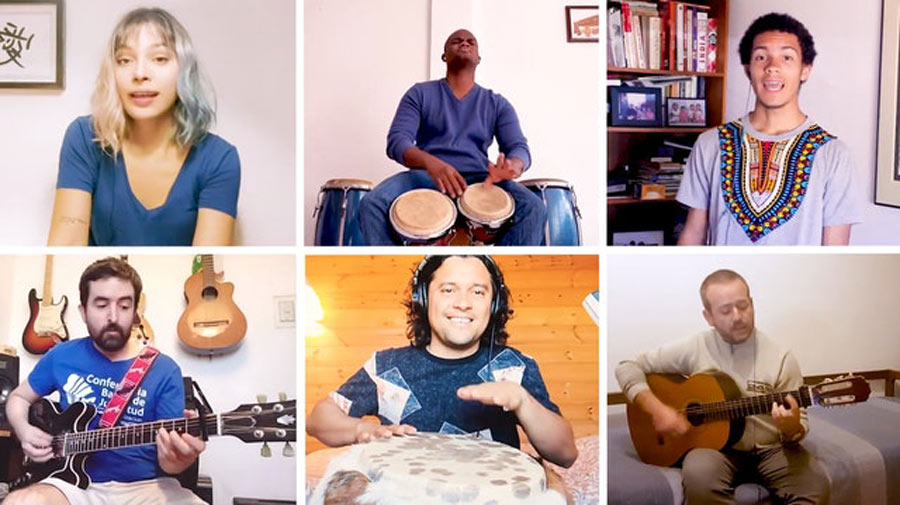The interplay between the arts and the human experience has long been recognized as a profound means of expression, a channel through which the essence of beauty and truth can be conveyed. Has it ever occurred to you how the arts possess a unique ability to illuminate the complexities of our existence? Through an exploration of Bahá’í teachings, we glean insights into how artistic endeavors not only reveal beauty in our world but also shed light on the myriad social, cultural, and spiritual challenges we face. This dialogue invites us to delve deeply into the transformative power of the arts within the context of Bahá’í philosophy.
At the heart of Bahá’í teachings lies the belief that beauty is an expression of divine attributes. The arts encompass a range of forms—music, literature, visual arts, and performance—all of which serve as manifestations of beauty. Within Bahá’í writings, it is articulated that beauty serves as a catalyst for the awakening of the human spirit, a means to elevate our appreciation of reality. Therefore, how might we channel our artistic inclinations to foster deeper understandings amidst the multifaceted challenges of contemporary society?
The Bahá’í Faith emphasizes the significance of fostering unity and addressing global issues through collective efforts. Artistic expressions can act as a unifying force, transcending geographical and cultural barriers. The visual arts, for instance, can encapsulate shared human experiences and advocate for compassion. A poignant illustration of this phenomenon can be found in art exhibitions that focus on social justice themes, propelling viewers to confront uncomfortable truths about inequity and discrimination. In this manner, the arts challenge us to reexamine societal norms and foster empathy.
Moreover, the auditory dimensions of the arts—such as music—can evoke emotions that propel us towards introspection and dialogue. Music has an unparalleled capacity to transcend language, harnessing the emotional resonance that binds humanity. In Bahá’í gatherings, music often serves as a vehicle for collective prayer and reflection, thus cultivating a space for unity and shared purpose. The melodies and harmonies emerging from diverse cultural backgrounds not only celebrate diversity but also reinforce the notion that together, we can confront our most pressing challenges.
However, engaging with these artistic expressions is not without its challenges. The proliferation of digital media has transformed the accessibility of art, offering both opportunities and pitfalls. While platforms for artistic dissemination abound, there exists a risk of superficial engagement—consuming art without contemplation or understanding. How do we ensure that our interactions with the arts foster depth and critical engagement rather than mere consumption? This inquiry beckons a return to the foundational principles of Bahá’í philosophy, advocating for a conscious approach to engagement with artistic endeavors.
A key tenet of the Bahá’í Faith is the pursuit of knowledge. The arts provide an alternative epistemological lens through which we can understand ourselves and the world. Each piece of art represents an idea, a narrative, a perspective—each with the potential to enrich our understanding of human experience. Engaging with the arts demands an intentional practice of reflection, interpretation, and discussion. Thus, the challenge emerges: how can we create environments that promote such engagements, fostering community discourse that draws from the profundities elicited by artistic creation?
In addition, the ethical implications of artistic creation and consumption must also be considered. The Bahá’í teachings encourage individuals to discern their choices with respect to the arts, emphasizing the importance of promoting works that embody virtues such as truthfulness, justice, and love. Artists, too, bear a significant responsibility in ensuring that their works contribute positively to the collective consciousness. This raises the question of accountability: how might artists navigate their roles within the broader context of societal challenges, ensuring that their contributions serve the greater good?
The Bahá’í perspective posits that the arts are not merely a reflection of reality but also a tool for transformation. By harnessing the artistic tools available to us, we possess the agency to advocate for change. For instance, the power of storytelling within literature allows authors to address social issues, drawing attention to injustices through compelling narratives. This form of advocacy can inspire action and engagement among readers, illustrating the potential of the arts to mobilize communities toward collective betterment.
Moreover, interdisciplinary collaborations between artists, scholars, and community leaders can initiate dialogues that innovate solutions to contemporary challenges. The arts act as a bridge, facilitating conversations across disciplines and enabling the merging of ideas. As diverse perspectives coalesce through artistic collaborations, innovative solutions to pressing issues emerge, enriching both the artistic and intellectual landscapes.
Finally, the role of children and youth in the arts can instigate a paradigm shift. The Bahá’í teachings emphasize the importance of nurturing the creativity and potential of younger generations. Encouraging youth to engage with the arts provides them with the opportunity to explore their identities, express their thoughts, and ultimately contribute to constructive dialogues on social change. When young individuals feel empowered to express their experiences through artistry, they become agents of transformation, capable of addressing the complexities of their world.
In conclusion, the engagement with the arts through the lens of Bahá’í teachings provides a multifaceted framework for understanding and addressing the beauty and challenges of our present reality. As a collective, we must embrace the arts as a dynamic tool for fostering unity, empathy, and critical engagement. The path forward requires concerted efforts to create spaces for deep reflection, ethical engagement, and collaborative exploration. By acknowledging the inherent power of the arts, we can illuminate the beauty of our world while courageously confronting the intricate challenges that lie ahead.
